In electrical installations, choosing the right wire nut size is crucial for ensuring safe and reliable connections. Among the various wire nut sizes available, the Red Wire Nut stands out as one designed to handle heavy-duty electrical connections involving larger wire gauges. For those working with 14-gauge wires, understanding how many of these wires can be safely accommodated in a Red Wire Nut is essential.
In this article, we will explore the capacity of Red Wire Nuts for 14-gauge wires, providing valuable insights into creating secure connections while adhering to industry standards and safety practices. Whether you’re a seasoned electrician or a DIY enthusiast, this guide will help you make informed decisions when working with 14-gauge wires and Red Wire Nuts in your electrical projects.
What Are Wire Nuts:
Push-in Wire Connectors:
Push-in wire connectors, as the name suggests, allow users to connect wires simply by inserting them into the connector without the need for twisting or screwing. These connectors feature spring-loaded clamps that grip the wires tightly, creating a solid electrical connection. They are usually color-coded based on the wire gauge they can accommodate, making it easier to match them with the appropriate wires.
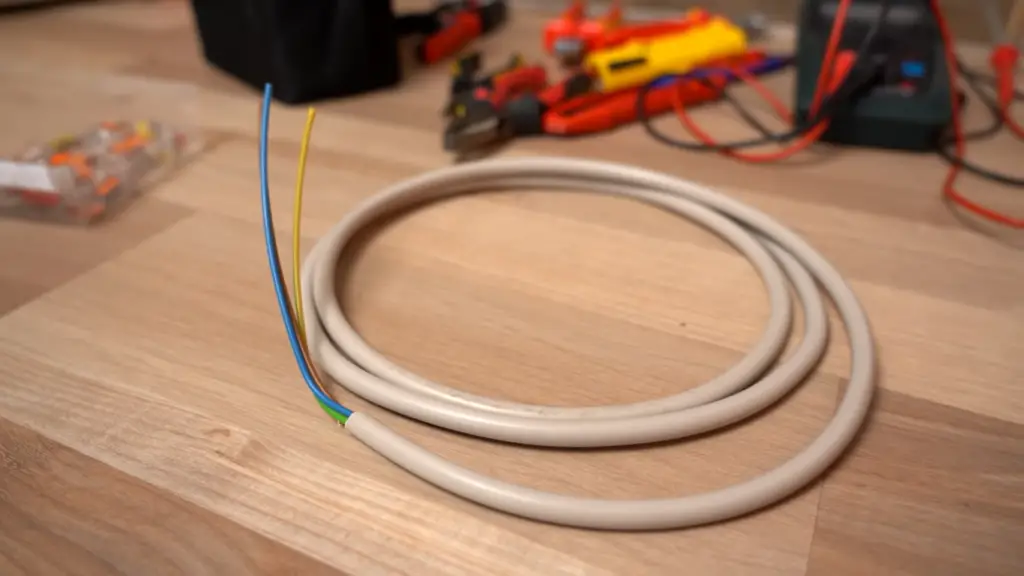
One of the significant advantages of push-in wire connectors is their ease of use [1]. They are quick to install, saving time and effort during electrical installations. Additionally, the lack of twisting wires together reduces the risk of accidental wire breakage, which can happen when using traditional twist-on wire nuts.
However, there are some considerations to keep in mind when using push-in wire connectors:
- Firstly, they are generally not reusable, so once installed, it can be challenging to remove and reposition them;
- Secondly, some electricians may prefer twist-on wire nuts for critical connections, as they tend to provide a more secure, long-lasting connection;
Twist-On Wire Nuts:
Twist-on wire nuts come in various sizes, with different color-coded options to match the wire gauge and accommodate multiple wires in a single connector, making them versatile and suitable for a wide range of electrical applications.
The main advantage of twist-on wire nuts is their reliability and reusability. If necessary, they can be unscrewed and used again, which can be beneficial during troubleshooting or modifications in electrical circuits [2].
Types of Wire Connectors:
Apart from push-in wire connectors and twist-on wire nuts, there are other types of wire connectors available, each designed for specific applications:
- Crimp-on Wire Connectors: These connectors are commonly used in automotive and marine applications. They require a crimping tool to compress the connector onto the wires, providing a secure and vibration-resistant connection;
- Wago Lever-Nuts: Lever-nuts are another type of push-in wire connector that operates with a lever. They offer a reusable and reliable connection and are well-suited for junction boxes or situations where multiple wires need to be connected;
- Terminal Blocks: Terminal blocks are modular connectors that allow multiple wires to be connected and organized within control panels or distribution boards. They are commonly used in industrial and commercial electrical installations;

Wire Nuts Colors and Sizes:
1. Blue Wire-Nut
The Blue Wire Nut is a popular wire connector designed for connecting solid or stranded copper wires within the range of 22 to 14 American Wire Gauge (AWG). It’s one of the smaller wire nut sizes, making it ideal for compact electrical boxes or situations where space is limited. The blue color coding helps electricians easily identify the appropriate wire nut for the corresponding wire gauge.
This wire nut is commonly used in residential and commercial applications for light fixtures, switches, receptacles, and other electrical connections that involve smaller wires. It provides a secure and insulated connection, preventing any potential electrical hazards.
2. Orange Wire-Nut
The Orange Wire Nut is slightly larger than the Blue Wire Nut and is designed to accommodate a wider range of wire gauges, typically from 22 to 10 AWG. Its versatility makes it a popular choice for a variety of electrical connections, including lighting, outlets, and junction boxes.
The orange color allows for quick identification and differentiation from other wire nut sizes. Its robust design ensures a reliable connection, even with larger wire sizes, and its high-quality insulating properties protect against electrical issues caused by loose or exposed wires.
3. Yellow Wing-Nut
The Yellow Wing Nut, as the name suggests, comes with additional features compared to traditional wire nuts. Its design incorporates wings or tabs that allow for easy hand-tightening, making it a breeze to secure wires without the need for a tool. This feature is especially beneficial for DIY enthusiasts and electricians who prefer a tool-free installation.
The Yellow Wing Nut is designed for use with a wide range of wire gauges, typically from 22 to 10 AWG. Its versatility, combined with the convenient winged design, makes it a popular choice for both professionals and non-professionals alike [3].
4. Tan Twister
The Tan Twister, often referred to simply as the Tan Wire Nut, is specifically designed for larger wire sizes, typically ranging from 16 to 6 AWG. Its robust construction and increased capacity allow for secure connections in applications that involve heavier electrical loads.
Electricians commonly use the Tan Twister in applications such as electrical panels, large appliances, and heavy-duty electrical equipment. The tan color helps distinguish it from other wire nut sizes, and its reliability ensures long-lasting connections in demanding environments.
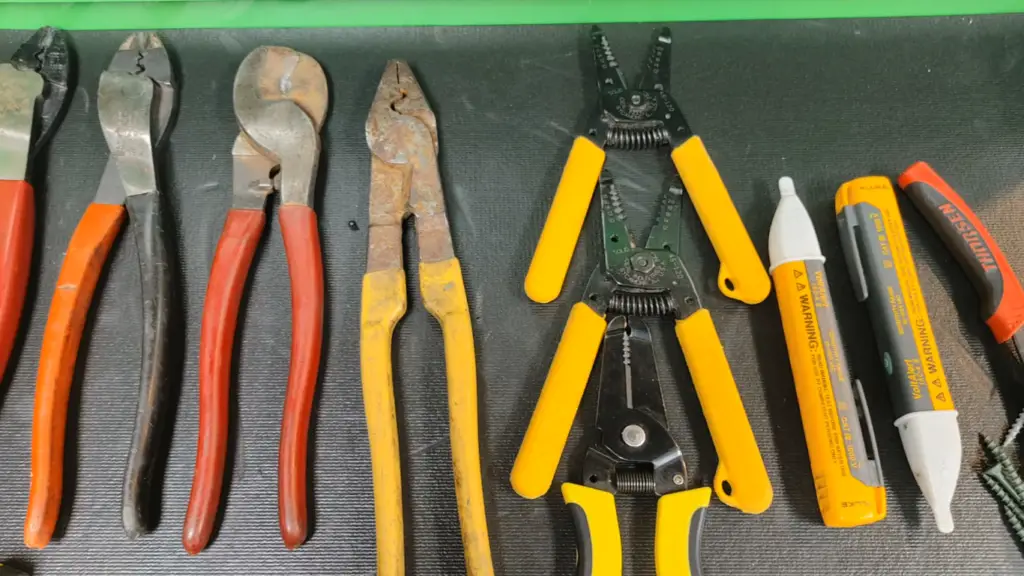
5. Red Wing-Nut
The Red Wing-Nut is one of the largest wire nut sizes, designed for use with heavy-duty electrical connections that involve large wires, typically ranging from 14 to 6 AWG. Its size and construction make it suitable for handling higher currents and power loads.
Like the Yellow Wing-Nut, the Red Wing-Nut also comes with convenient wings or tabs, allowing for tool-free installation. This feature simplifies the process of connecting larger wires, reducing the time and effort required for the job.
Choosing the Right Wire Nut
Selecting the appropriate wire nut for a specific electrical connection is crucial to ensure safety and reliability. The correct wire nut size is determined by the wire gauge and the number of wires being connected.
Electricians should follow these general guidelines:
- Blue Wire-Nuts: Suitable for 22 to 14 AWG wires;
- Orange Wire-Nuts: Suitable for 22 to 10 AWG wires;
- Yellow Wing-Nuts: Suitable for 22 to 10 AWG wires, with winged design for tool-free installation;
- Tan Twister: Suitable for 16 to 6 AWG wires, for heavy-duty applications;
- Red Wing-Nuts: Suitable for 14 to 6 AWG wires, with winged design for tool-free installation;
It is essential to ensure a proper connection by carefully twisting the wires together before securing the wire nut. Tug tests can be performed to verify the connection’s tightness, ensuring that the wires are snugly held together and well-insulated by the wire nut.
How Many Wires Can A Wire Nut Hold?
The number of wires a wire nut can hold depends on its size and design. Wire nuts are available in various sizes, and each size is rated to accommodate a specific range of wire gauges and the number of wires they can safely connect.
Smaller wire nuts, such as the Blue Wire-Nut or Orange Wire-Nut, are commonly used for residential electrical connections and are typically designed to hold two to three wires of the specified gauge range.
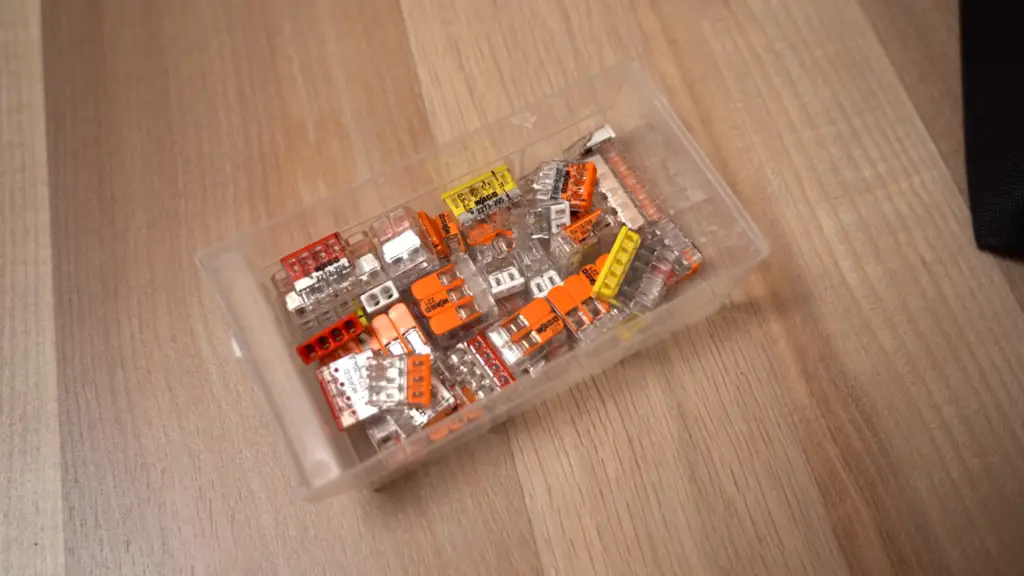
As the wire nut size increases, so does its wire-holding capacity. Larger wire nuts like the Tan Twister or Red Wing Nut can handle more wires, typically ranging from three to five wires, depending on the wire gauge being used.
It’s essential to follow the manufacturer’s guidelines and specifications when using wire nuts to ensure a safe and reliable connection. Exceeding the recommended number of wires can lead to a loose connection, reduced electrical conductivity, and potential safety hazards like overheating, arcing, or electrical fires.
Moreover, when connecting multiple wires with a wire nut, it’s crucial to ensure that the stripped wire ends are inserted fully into the wire nut and that the wire nut is securely tightened. Properly twisting the wires together before adding the wire nut also helps create a solid connection.
If you need to connect more wires than a single wire nut can handle, it’s best to use additional wire nuts or consider using a larger-sized wire nut that can accommodate the required number of wires for your specific application.
Always prioritize safety and adhere to electrical codes and guidelines when making wire connections to ensure a reliable and hazard-free electrical installation. If you’re unsure about the appropriate wire nut size or the number of wires it can hold for your specific project, consult a qualified electrician for assistance.
Why Should I Use Red Wire Nut?
Using a Red Wire Nut can be beneficial for specific electrical applications due to its size and capabilities. The Red Wire Nut is one of the larger wire nut sizes, designed to accommodate heavy-duty electrical connections involving larger wire gauges, typically ranging from 14 to 6 American Wire Gauge (AWG) [4].
Here are some reasons why you should consider using a Red Wire Nut:
- Handling Larger Wire Sizes: The primary purpose of the Red Wire Nut is to handle larger wire sizes effectively. When dealing with thicker wires that carry higher currents, you need a wire nut that can securely connect and insulate them. The Red Wire Nut’s larger capacity makes it suitable for connecting more substantial conductors, providing a reliable connection for demanding electrical applications;
- Increased Current Capacity: Thicker wires generally carry more electrical current. By using a Red Wire Nut, you ensure that the wire nut can handle the higher current load without overheating or compromising the electrical connection. This is crucial for circuits that involve power-hungry devices or appliances;
- Secure Connections: The larger size of the Red Wire Nut allows for more surface area contact between the wires, enhancing the connection’s stability. This added contact area reduces the risk of loose connections, which can lead to electrical issues like arcing, voltage drops, and potential hazards;
- Suitable for Multiple Wires: The Red Wire Nut is designed to accommodate multiple wires within the specified range of 14 to 6 AWG. This capability is especially useful in scenarios where you need to connect multiple wires together, such as in junction boxes or when branching off power to various devices;
- Winged Design: Some Red Wire Nut models come with convenient wings or tabs that facilitate tool-free installation. The wings allow for easy hand-tightening, simplifying the connection process and saving time and effort during installation;
- Safety and Code Compliance: When dealing with heavy-duty electrical connections, safety is of utmost importance. Using the appropriate wire nut size, such as the Red Wire Nut for larger wire gauges, ensures compliance with electrical codes and regulations, reducing the risk of electrical hazards and promoting a safer electrical installation;
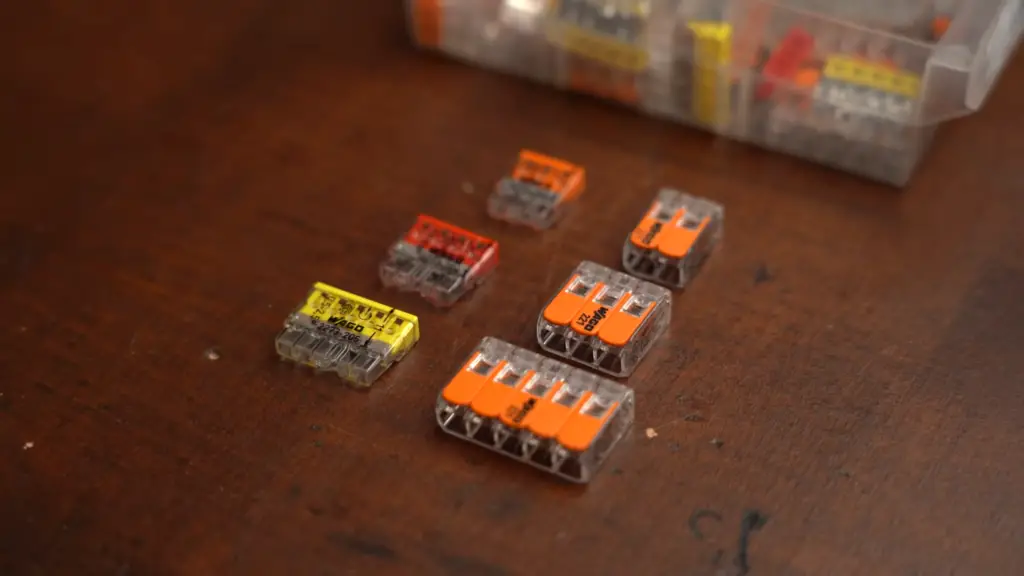
When to Use Other Wire Nuts?
Using the right wire nut size for the specific application is essential to ensure a secure and reliable connection. Incorrectly sized wire nuts can lead to loose connections, reduced electrical conductivity, and potential safety hazards. Always consult the manufacturer’s guidelines and follow electrical codes when selecting and using wire nuts.
How Many Wires Are Typically In Red Wire Nut:
Number of 12 Gauge Wires
The 12-gauge wire is commonly used for general-purpose electrical circuits and can handle a higher electrical load compared to smaller wire gauges. In a Red Wire Nut, you can typically fit around two or three 12-gauge wires comfortably. The wire nut’s larger size allows for a secure connection, ensuring a reliable electrical joint for 12-gauge wires.
When connecting multiple 12-gauge wires with a Red Wire Nut, it’s crucial to ensure that the stripped ends of the wires are fully inserted into the wire nut and that the nut is securely tightened. A tug test can be performed to verify the connection’s tightness, providing confidence in the integrity of the electrical joint.
Number of 12-2 Gauge Wires
The 12-2 gauge wire is commonly used for residential wiring, specifically for outlets, switches, and lighting circuits. It consists of two conductors (black and white) and a ground wire (bare or green). Since the 12-2 gauge wire is slightly thicker due to the presence of two conductors, a Red Wire Nut can typically accommodate two or three 12-2 gauge wires.
When connecting 12-2 gauge wires, it’s essential to treat each conductor as an individual wire and ensure that all conductors are correctly seated within the wire nut. Proper installation guarantees a solid electrical connection and minimizes the risk of electrical issues.
Number of 14-Gauge Wires
The 14-gauge wire is commonly used for lighting circuits and general electrical applications with lower electrical loads. Due to its smaller size, a Red Wire Nut can comfortably accommodate three to four 14-gauge wires.
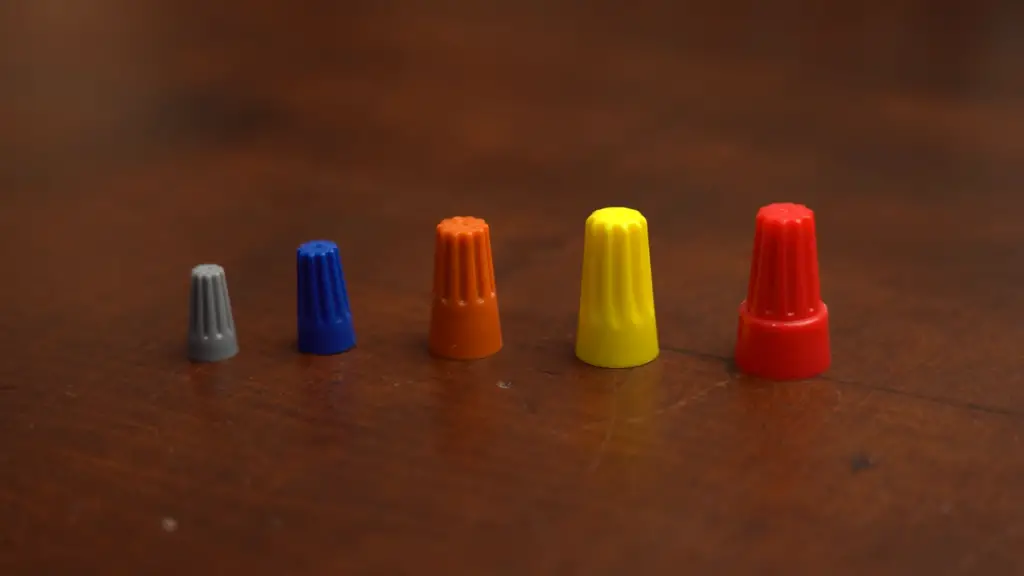
When connecting multiple 14-gauge wires, ensure that they are twisted tightly together before inserting them into the wire nut. A well-twisted connection helps create a solid foundation for the wire nut to grip onto, enhancing the overall reliability of the joint [5].
Important Considerations
While the Red Wire Nut can hold multiple wires comfortably, it’s essential to follow the manufacturer’s guidelines and specifications. Always check the packaging or the manufacturer’s documentation for the specific wire nut model to verify the exact wire-holding capacity.
It’s important to remember that the number of wires a wire nut can hold might vary slightly based on factors like the wire’s insulation type, the length of the stripped wire ends, and the specific design of the wire nut. Therefore, it’s always a good practice to perform a tug test after installing the wire nut to ensure that the connection is secure.
Additionally, when dealing with multiple wires, it’s crucial to ensure that the wires are properly rated for the electrical load they will carry. Exceeding the wire’s ampacity or the wire nut’s capacity can lead to overheating and potential safety hazards.
How Many Wires Can You Put in Red Wire Connectors?
The number of wires you can put in Red Wire Connectors, also known as Red Wire Nuts, depends on the wire gauge and the specific model of the wire connector. Red Wire Connectors are larger-sized wire nuts designed to accommodate heavy-duty electrical connections involving larger wire gauges, typically ranging from 14 to 6 American Wire Gauge (AWG).
As a general guideline:
- For 14-gauge wires: Red Wire Connectors can typically hold around three to four 14-gauge wires comfortably;
- For 12-gauge wires: Red Wire Connectors can generally hold around two to three 12-gauge wires;
- For 10-gauge wires: Red Wire Connectors can typically accommodate two to three 10-gauge wires [6];
For wire gauges larger than 10 AWG, it is essential to follow the manufacturer’s guidelines and specifications. Some Red Wire Connectors might have a larger capacity and can accommodate more wires for thicker gauges. Always check the packaging or the manufacturer’s documentation for the specific Red Wire Connector model to verify its wire-holding capacity.
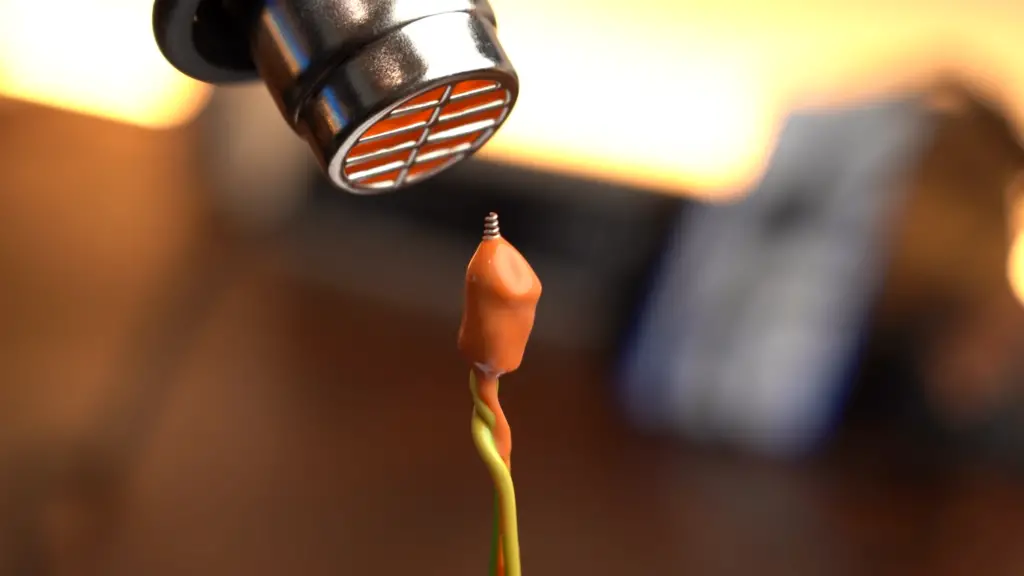
When using Red Wire Connectors to connect multiple wires, ensure that the stripped ends of the wires are fully inserted into the wire connector and that the connector is securely tightened. A tug test can be performed to verify the connection’s tightness, providing confidence in the integrity of the electrical joint.
It is crucial to remember that exceeding the wire connector’s rated capacity or the wire’s ampacity can lead to overheating and potential safety hazards. Always ensure that the wires are correctly rated for the electrical load they will carry and that the wire connector is suitable for the number and size of wires being connected.
How Many 14-Gauge Wires Can a Red Wire Nut Handle:
Red Wire Nuts, designed for heavy-duty electrical connections involving larger wire gauges, are widely used in various electrical installations. When it comes to handling 14-gauge wires, several factors determine the number of wires a Red Wire Nut can safely accommodate.
1) Space Restrictions
One of the primary considerations when using Red Wire Nuts with 14-gauge wires is the available space within the wire nut. Red Wire Nuts are larger in size compared to their counterparts designed for smaller wire gauges. However, even with their larger size, the internal space within the wire nut can become limited when dealing with thicker wires like 14-gauge.
In typical Red Wire Nuts, you can generally fit around three to four 14-gauge wires comfortably. Attempting to cram more wires than the wire nut can handle might result in a loose connection, which can lead to electrical issues like arcing or overheating.
When dealing with multiple 14-gauge wires, it’s essential to ensure that they fit comfortably within the wire nut, leaving enough space for the connector to grip each wire securely.
2) Contact Area
The contact area between the wires inside the Red Wire Nut is a critical factor for a secure and reliable electrical connection. A larger contact area ensures better conductivity and reduces the risk of resistance, which could lead to overheating.
Properly twisting the 14-gauge wires together before inserting them into the Red Wire Nut helps maximize the contact area. A well-twisted connection creates a solid foundation for the wire nut to grip onto, enhancing the overall reliability of the joint.
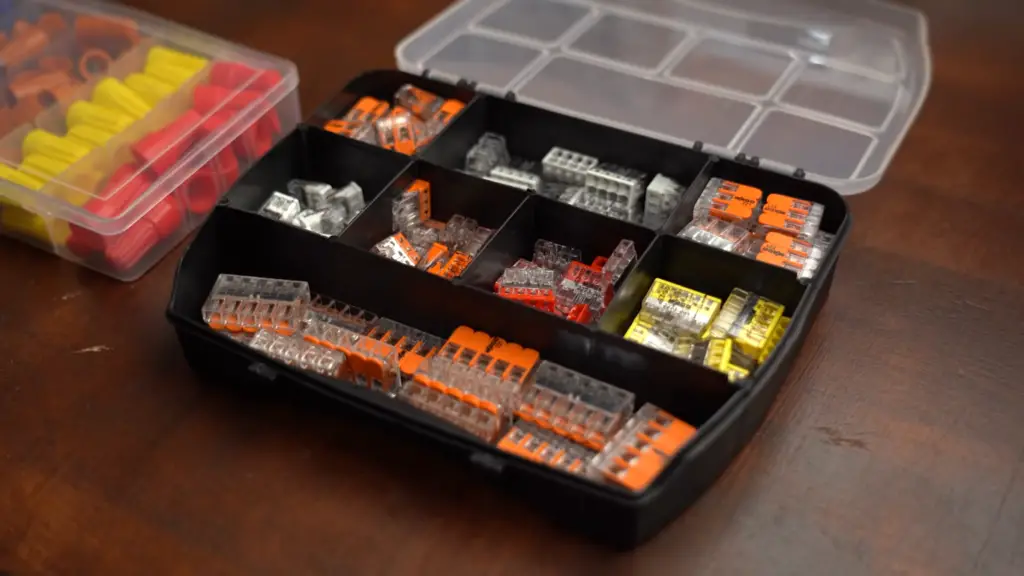
3) Safety Concerns
Safety is paramount in electrical installations, and using Red Wire Nuts with 14-gauge wires requires careful consideration. It is crucial to ensure that the Red Wire Nut is rated for the specific number of 14-gauge wires you intend to connect. Exceeding the wire nut’s rated capacity can result in a loose connection or insufficient insulation, leading to potential hazards like arcing or electrical fires.
Moreover, when connecting 14-gauge wires, always use wire nuts that are appropriately sized for the specific wire gauge. Using undersized wire nuts can lead to a loose and unreliable connection, jeopardizing the safety of the electrical installation.
Should You Use A Wire Nut Size Calculator?
Using a wire nut size calculator can be a helpful tool when working on electrical projects that involve connecting wires with wire nuts. These calculators are designed to assist electricians and DIY enthusiasts in determining the appropriate wire nut size for specific wire gauges and the number of wires being connected.
Here are some reasons why using a wire nut size calculator can be beneficial:
- Accuracy: Wire nut size calculators provide precise calculations based on industry standards and manufacturer specifications. They take into account factors like wire gauge, the number of wires, and the type of wire insulation to recommend the most suitable wire nut size for the specific application. This accuracy ensures that the wire nut selected can safely and securely hold the intended wires;
- Safety: Using the correct wire nut size is essential for safety in electrical installations. Incorrectly sized wire nuts can lead to loose connections, increased resistance, and potential electrical hazards like arcing or overheating. By using a wire nut size calculator, you reduce the risk of making errors in selecting the appropriate wire nut, promoting a safer electrical installation;
- Time-Saving: Instead of manually looking up wire nut capacities or referring to tables, a wire nut size calculator can provide instant recommendations. This saves time during the planning and preparation stages of an electrical project, allowing you to focus more on the actual installation;
- Versatility: Wire nut size calculators often cater to a wide range of wire gauges and the number of wires that can be connected. This versatility ensures that you can use the calculator for various applications, whether you’re working with smaller wire gauges in residential settings or larger wires in industrial environments;
- Confidence in Connections: When using a wire nut size calculator, you can be confident that you are making informed decisions about the wire nut size. This confidence translates to more reliable connections, reducing the need for rework and ensuring a smoother electrical installation process;
- Educational Value: Some wire nut size calculators provide explanations and insights into their recommendations. This educational aspect helps users understand the factors influencing wire nut selection, enhancing their knowledge of electrical connections and safety practices [7];
However, while wire nut-size calculators can be valuable tools, they should not be used as a substitute for understanding electrical principles and safety guidelines. It’s essential to have a basic understanding of wire gauges, wire nut capacities, and electrical codes. Additionally, always cross-reference the calculator’s recommendations with the manufacturer’s specifications for the specific wire nut model you plan to use.
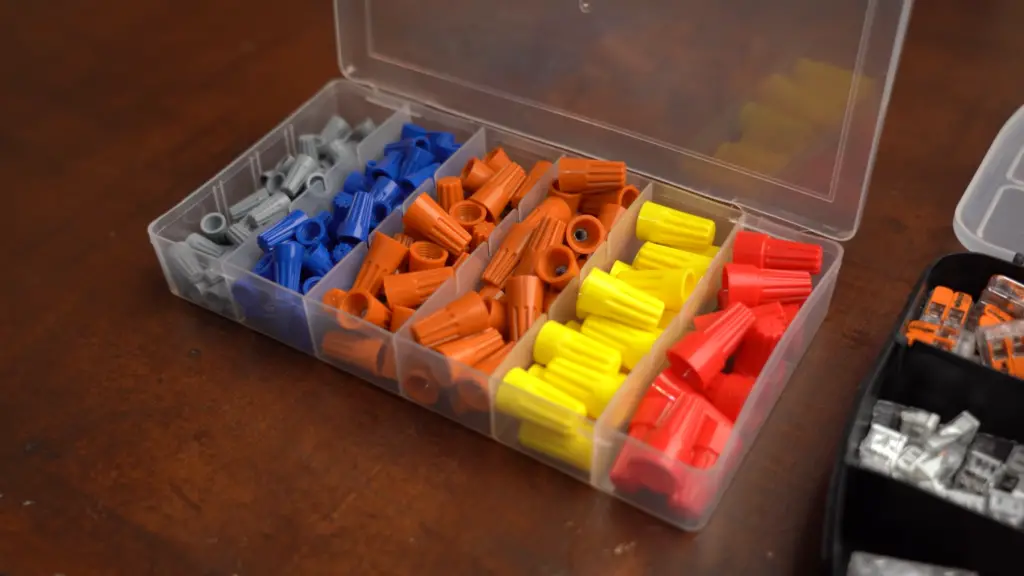
FAQ:
1. How many 12 gauge wires can you put in a blue wire nut?
A blue wire nut is typically designed to accommodate 12 to 14-gauge wires. Therefore, you can safely put two to three 12-gauge wires in a blue wire nut. It’s essential to ensure that the stripped ends of the wires are fully inserted into the wire nut and that the nut is securely tightened to create a reliable electrical connection.
2. How many wires can you pigtail together?
The number of wires you can pigtail together depends on the wire nut size and the wire gauge. In general, you can safely pigtail two to four wires of the same gauge together using an appropriately sized wire nut. However, it’s crucial to consult the wire nut’s manufacturer’s guidelines and specifications for the specific model being used.
3. How many wires can you put in a yellow wire nut?
A yellow wire nut is designed to accommodate a wide range of wire gauges, typically from 22 to 10 AWG. Depending on the wire gauge, you can safely put two to three wires in a yellow wire nut. Some yellow wire nuts with wings or tabs may allow for tool-free installation, simplifying the process of connecting multiple wires.
4. What are alternatives to wire nuts?
Some alternatives to wire nuts include:
- Push-in Wire Connectors: These connectors allow for quick and easy wire connections without the need for twisting. They are suitable for specific applications and come in various sizes;
- Lever-Nuts (Wago connectors): Lever-nuts are reusable push-in connectors that provide a convenient and secure wire connection;
- Crimp-On Wire Connectors: Crimp-on connectors are commonly used in automotive and marine applications, requiring a crimping tool to compress the connector onto the wires;
5. What color is the largest wire nut?
The color coding of wire nuts can vary depending on the manufacturer, but typically, the largest wire nut size is red.
6. What are orange wire nuts rated for?
Orange wire nuts are typically rated for wire gauges ranging from 22 to 10 AWG. They can accommodate two to three wires comfortably and are commonly used for various electrical connections.
7. Does the wire nut size matter?
Yes, the wire nut size matters significantly for creating a safe and reliable electrical connection. Using the correct wire nut size ensures that the wires are securely held together and properly insulated, preventing potential hazards like arcing or overheating.
8. Do you need to twist wires before the wire nut?
Yes, it is essential to twist the wires together before inserting them into the wire nut. Twisting the wires ensures a solid connection and creates a more secure foundation for the wire nut to grip onto.
9. How many wires can you put in a wire nut?
The number of wires a wire nut can hold depends on its size and the wire gauge being used. Wire nuts come in various sizes and can typically hold two to five wires, depending on the specific model and manufacturer guidelines.
10. What if you are unsure of the wiring requirements or the wire nut capacity?
If you’re unsure of the wiring requirements or the wire nut capacity, it’s best to consult a qualified electrician. A professional electrician can help determine the appropriate wire nut size and make safe and compliant wire connections for your specific electrical project.
11. How many 14-gauge wires can you wire nut together?
You can typically wire nut together three to four 14-gauge wires, depending on the wire nut’s size and specifications. Always ensure that the wire nut is rated for the specific number of wires you intend to connect.
12. How many wires can you connect to a red wire nut?
Red wire nuts are designed to accommodate larger wire gauges, usually from 14 to 6 AWG. You can typically connect two to three wires comfortably with a red wire nut.
13. What wires go in a red wire nut?
Red wire nuts are suitable for connecting larger wire gauges, typically ranging from 14 to 6 AWG. These wire nuts are commonly used for heavy-duty electrical connections involving larger conductors.
14. What gauge is a red wire nut?
Red wire nuts are typically designed to accommodate wire gauges ranging from 14 to 6 AWG.
15. How many 14 gauge wires are in a yellow wire nut?
A yellow wire nut can usually hold two to three 14-gauge wires securely.
16. What gauge is the red automotive wire?
Red automotive wire can come in various wire gauges, depending on its intended use. Common gauges for automotive applications include 18 AWG, 16 AWG, and 14 AWG.
17. How do you know what size of a wire nut to use?
To determine the appropriate wire nut size, consider the wire gauge and the number of wires being connected. Consult a wire nut size chart or use a wire nut size calculator to find the suitable wire nut size based on your specific application.
18. Can 3 red wires go together?
Yes, you can connect three red wires together using an appropriately sized wire nut. However, always verify that the wire nut is rated for the number of wires and the wire gauge being used.
19. How do you wire a nut with multiple wires?
To wire a nut with multiple wires, follow these steps:
- Strip the ends of the wires to the appropriate length;
- Twist the stripped ends of the wires together in a clockwise direction;
- Insert the twisted wires into the wire nut;
- Hold the wire nut securely and twist it clockwise until it is snug;
20. Can you double up a 14-gauge wire?
Using two 14-gauge wires together is known as “doubling up”. In some situations, doubling up wires can be allowed, but it is essential to follow electrical codes and manufacturer guidelines to ensure a safe and compliant electrical connection. Consulting a qualified electrician is recommended for specific cases.
21. Does it matter what wire nut you use?
Yes, it matters what wire nut you use for specific wire gauges and applications. Choosing the correct wire nut size and type ensures a secure and safe electrical connection.
22. Should you use electrical tape on wire nuts?
Using electrical tape on wire nuts is generally not necessary, as wire nuts are designed to provide a secure and insulated connection.
However, some electricians choose to wrap electrical tape around wire nut connections as an extra layer of protection, especially in situations where the wires may be subject to movement or vibration. If you decide to use electrical tape, ensure it does not interfere with the wire nut’s effectiveness or exceed the connector’s capacity.
Useful Video: What Wire Connector is the Best? Settling a Debate! Wire Nut VS Wago
References
- https://www.circuitsgallery.com/how-many-14-gauge-wires-in-a-red-wire-nut
- https://www.electrical101.com/wire-connectors.html
- https://portablepowerguides.com/how-many-wires-in-red-wire-nut/
- https://homerepairgeek.com/tips/wire-nut-size-chart.html
- https://conquerallelectrical.ca/how-many-wires-in-a-wire-nut/
- https://www.houzz.com/discussions/2643688/wire-nut-capacity
- https://www.reddit.com/r/electrical/comments/t20x1r/wire_nuts_big_enough_for_six_14_gauge_wires/





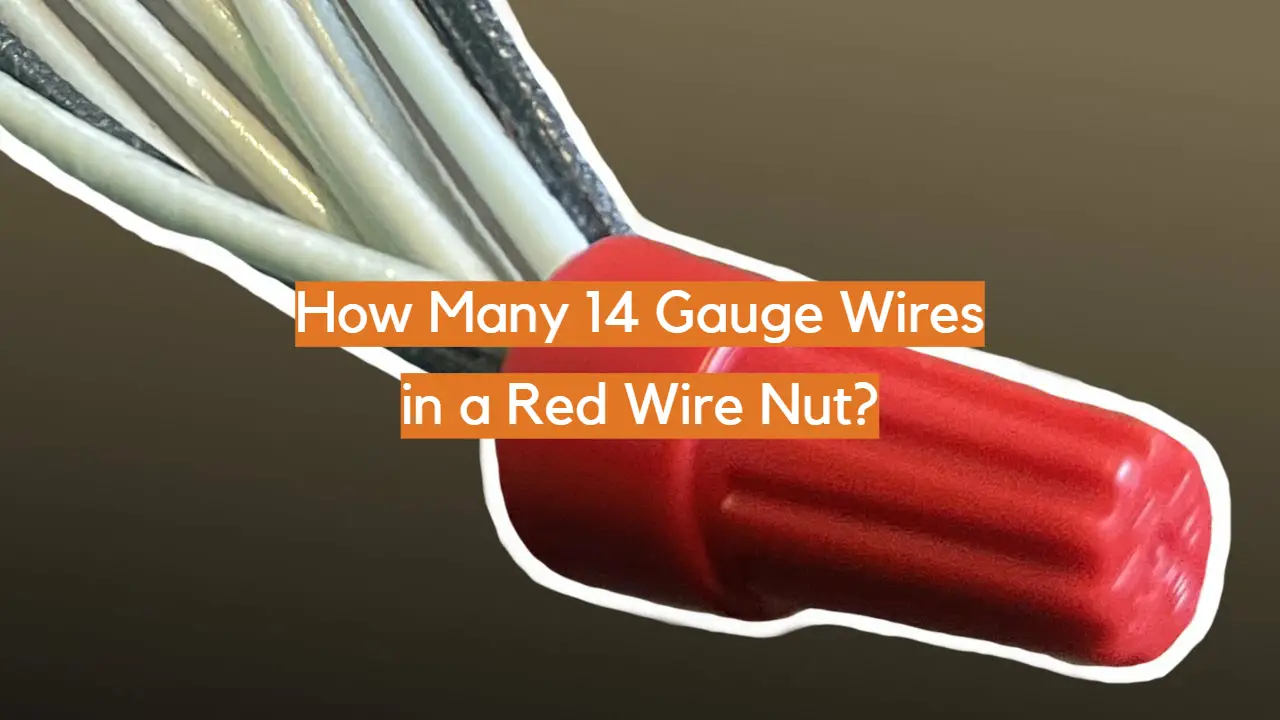





Leave a Reply